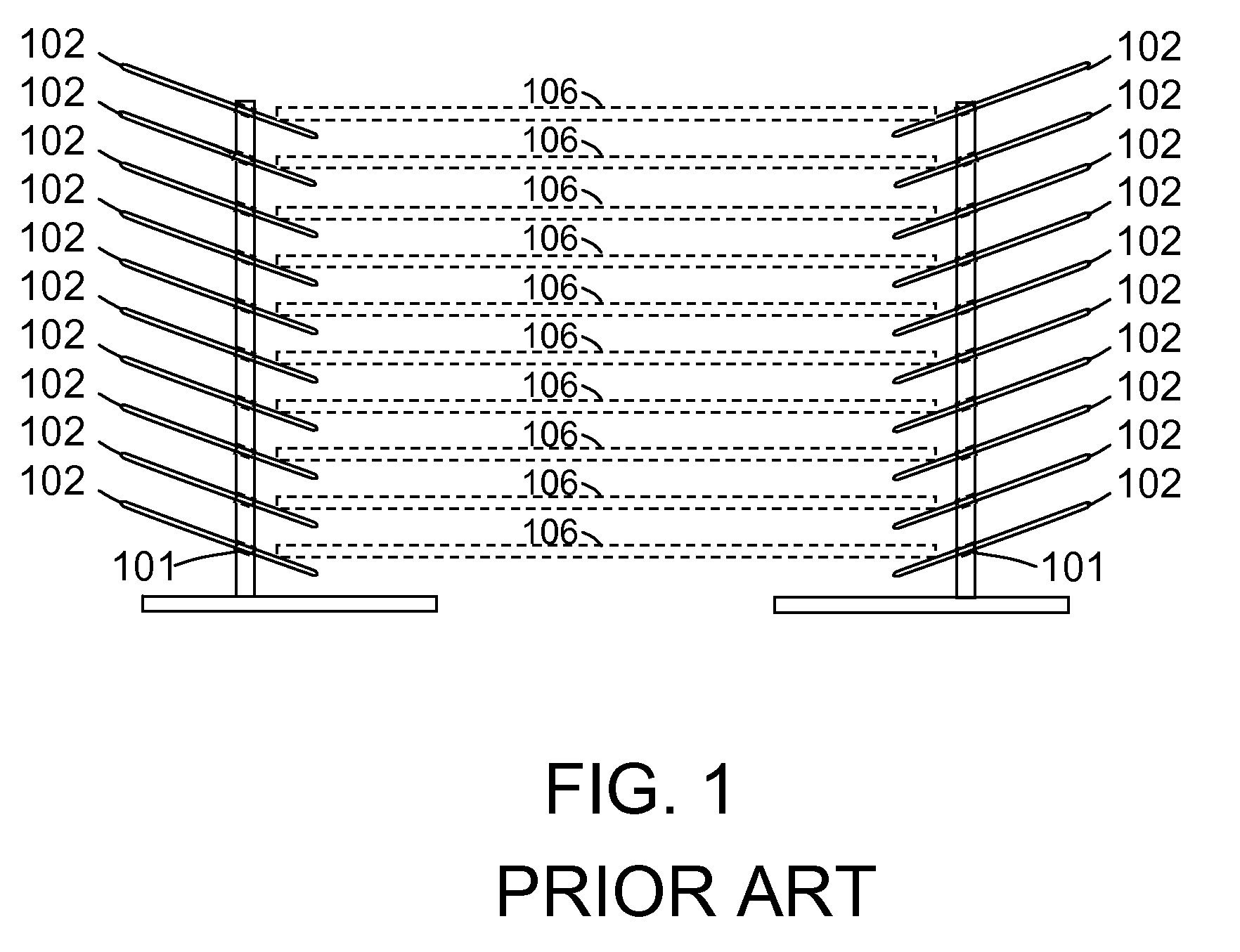Prepping, spraying and drying rack system for doors
a technology for spraying racks and doors, applied in the field of racks, can solve the problems of fouling the wet paint on the door, affecting the finish of the door, and affecting the quality of the door,
- Summary
- Abstract
- Description
- Claims
- Application Information
AI Technical Summary
Benefits of technology
Problems solved by technology
Method used
Image
Examples
Embodiment Construction
[0059]This invention can be used for the prepping, spraying and drying of flat objects such as doors, cabinet panels, cabinet doors, and window shutters. FIG. 3, FIG. 4 and FIG. 5 illustrate the invention being used for a door being prepped. Essentially it consists of a rack comprising two supporting structures 1 facing each other. Each supporting structure 1 includes a pair of vertical members 2 joined together and held erect by a base structure 3. The vertical members 2 are traversed by a series of substantially horizontal openings 4 and 4a through which bars 5 are inserted. FIG. 4 is a side view of the painter's rack system. FIG. 5 provides a close up view of the bars 5 which may have a square cross-section as shown in the figure. The bars are inserted such that one of their edges faces upward. The door or object which is to be worked on is supported by the bars. As discussed below providing bars with a square cross section is only one of many possible alternatives.
[0060]The bars...
PUM
 Login to View More
Login to View More Abstract
Description
Claims
Application Information
 Login to View More
Login to View More - R&D
- Intellectual Property
- Life Sciences
- Materials
- Tech Scout
- Unparalleled Data Quality
- Higher Quality Content
- 60% Fewer Hallucinations
Browse by: Latest US Patents, China's latest patents, Technical Efficacy Thesaurus, Application Domain, Technology Topic, Popular Technical Reports.
© 2025 PatSnap. All rights reserved.Legal|Privacy policy|Modern Slavery Act Transparency Statement|Sitemap|About US| Contact US: help@patsnap.com



